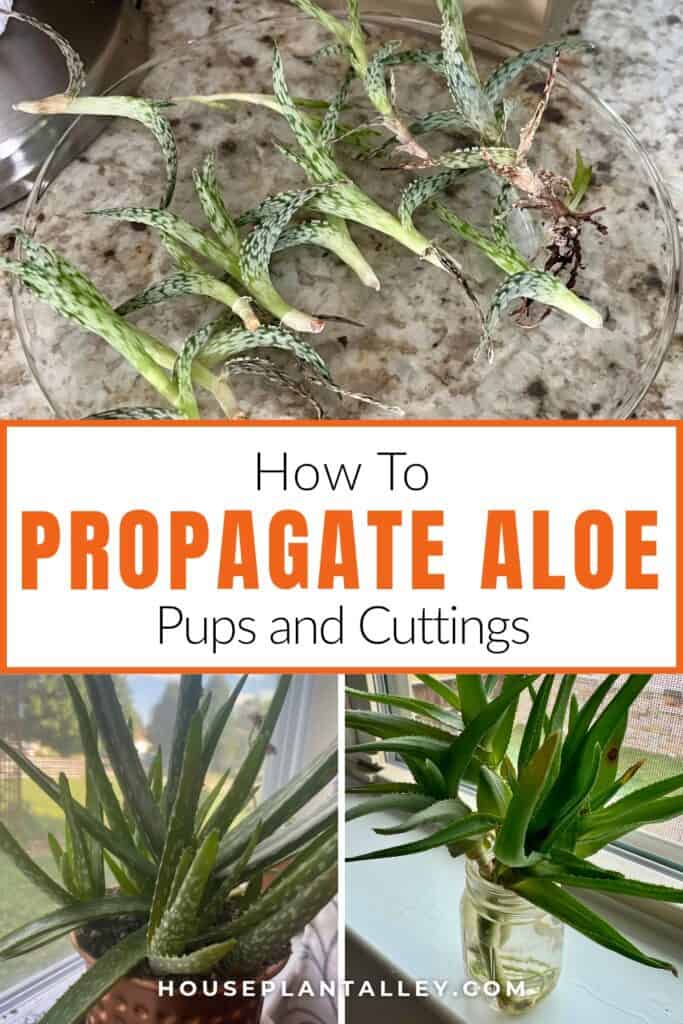Whether you’re growing more of your favorite aloe, adding to your succulent collection, or sharing plants with friends, you’ll need to choose between two proven ways to propagate: pups or cuttings.

- Pups are the easiest option, with success rates close to 90%.
- Cuttings are more challenging, with about a 60% success rate.
Your plant’s condition, your available time, and your gardening experience will help you decide which method is best. But before you choose, there’s one important detail many gardeners forget.
Contents
Understanding Aloe Propagation: Pups vs. Cuttings
When you’re ready to grow more aloe plants, you have two main options:
- Dividing pups: These are small versions of your main plant that grow naturally during the season. They’re the easiest and fastest way to get new aloe plants.
- Taking cuttings: This method is useful when pups aren’t growing or you want more plants at once. It takes more skill and patience because you need stem pieces—not just leaves—for successful rooting.
Comparing the Two Techniques
Why Division Is Easier

Dividing pups is the most reliable method. Pups already have their own roots, so replanting them is almost foolproof. You’re basically moving small, mature plants—not starting from scratch.
When Cuttings Make Sense
Cuttings are harder to get right. You need good technique, the right timing, and a bit of luck. You’ll need stem pieces for the cuttings to work, and there’s a higher chance of failure due to rot. Still, cuttings can give you more plants from one aloe when pups aren’t available.
Use division for guaranteed success. Use cuttings when you need quantity and are ready for a challenge.
What You’ll Need for Propagation
You only need a few basic supplies—and you probably already have them:
- A sharp, clean knife for cutting stems and dividing pups.
- Succulent or cactus potting mix for good drainage. Or make your own by mixing equal parts potting soil and sand. Avoid regular potting soil—it holds too much water.
- Small containers instead of large ones. Smaller pots help prevent water buildup, which can cause root rot.
How to Divide Aloe Pups Step-by-Step
You can turn one crowded aloe into several healthy plants in under an hour. Here’s how:
- Carefully remove the plant from its pot to avoid damaging the roots.
- Brush away the soil around the base to reveal the pups and check root health.
- Gently separate the pups by pulling or cutting near the main stem.
- Let the pups dry (callous) for 2–3 days in a dry place.
- Plant each pup in its own small pot with well-draining soil. Water lightly and place in a warm, sunny spot.
How to Propagate Aloe Using Cuttings
If your plant doesn’t have pups or it’s overgrown, cuttings are a good way to grow more aloe. This method gives you more plants but takes more time and care.
- Remove the plant from its pot and clear away the soil to expose the stem.
- Use a sharp, clean knife to cut stem pieces. Don’t snap off leaves—they’ll rot and won’t grow.
- Let the cuttings dry for several days. This helps prevent rot and encourages root growth.
Planting and Caring for Aloe Cuttings
Once your cuttings have dried properly, it’s time to plant them:
- Fill a large pot with well-draining succulent soil.
- Gently press the bottom of each cutting into the soil. Don’t bury them too deep.
- If the leaves are too big and make the plant fall over, trim them.
- Use toothpicks or small stones to support wobbly cuttings.
- Water lightly and let the water drain.
- Place the pot in bright, indirect sunlight.
You’ll usually see new growth in about two weeks. That means the roots are growing and it’s time to move each plant into its own pot.
